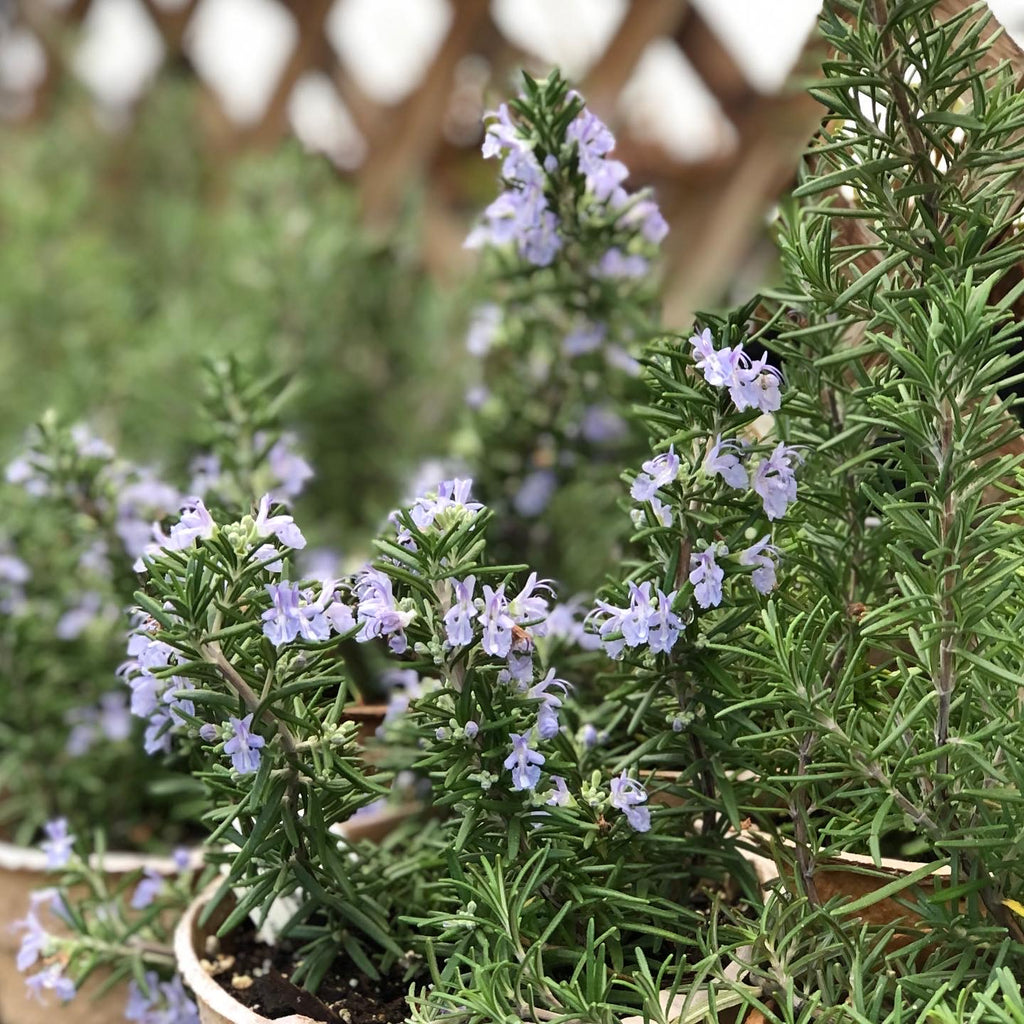Winter is the blooming season for rosemary, and the charming blue flowers are delicious too (honey + rosemary flavour 🙂)
Rosemary is one of the most popular herbs to keep indoors through winter, but admittedly we hear one of two things about people's experience growing it:
a) "my rosemary is amazing and I've had it for years" b) "my rosemary always dries up over winter!"
So, let's try to figure this out so that more people can enjoy their lovely rosemary long term.

Rosemary is a coastal plant that enjoys the contrast between warmer, drier summers and cooler, humid winters (image from CasaMiaTours.com)
Since rosemary plants are Mediterranean, their natural winter conditions are cool, sunny, and humid... just about the opposite of the average prairie home through winter. It is tremendously helpful to find the coolest location indoors that still has good light. In terms of cool, the ideal temperatures are actually between 5 C - 14 C (which can only really be achieved in most homes in heated garages or sunrooms), but if the perfect conditions are not available it is still possible to find success with slightly more "normal" indoor temperatures... just avoid your coziest space. Foyers, attic windows, bay windows and patio doors all lend themselves to wintering rosemary.
If cooler conditions are not an option, using full spectrum grow lights (and pretending it is eternal summer!) is another way to help rosemary flourish over winter. Place plants within 8" of the lights and leave them on 16 hours a day. One advantage of this approach will be plants that produce regularly during the typically quieter winter months.
Regardless of whether rosemary ends up in a window or under lights, it is a good strategy to avoid or deflect the drying impact of forced air heating. Ideally, pots of rosemary and other Mediterranean evergreen herbs can be set up so that they are completely isolated from heat vents (for example, in the kitchen where counters can create separation from vents). However, if this is not possible, placing rosemary on saucers with small stones sitting between the saucer and pot (called a pebble tray) will create a micro-climate of humidity directly around the plant.

Rather than harvesting long stems, focus on pruning from multiple stem tips, to encourage regrowth
Another way to help rosemary through the winter months is to pinch stem tips, encouraging new growth that has only known indoor conditions. Look for the points where the needley-leaves branch out from the stem, called internodes, and trim just above these. Each cut will encourage two new stems to grow, as well as signalling the plant to grow new stems lower down. It is worth taking the time to pinch out the tops of all stems every so often and, of course, you can enjoy the trimmings as a seasoning!

Some rosemary cultivars are more likely than others to flower. Sage Garden favourite bloomers include Blue Rain, Gorizia, and Foxtail.
The best way to approach winter hydration of rosemary is to water deeply and then allow the soil to dry out enough that your finger does not sense moisture in the top half inch (or so) of soil. In a bright, cooler location it is common to water deeply about once per week - but of course, the frequency is impacted by dynamic conditions such as the amount and type of indoor heating as well as outdoor weather conditions (things dry out much faster during a week of bright sun coming through the windows versus during a cloudy week). Where possible, it is very good practice to water indoor plants in the shower or a laundry sink, allowing forceful spray to rinse away dust and potential pests in the process!

Some rosemary cultivars are more likely than others to flower. Sage Garden favourite bloomers include Blue Rain, Gorizia, and Foxtail
Finally, continuing to fertilize through the winter is an essential step when it comes to healthy rosemary. Warmer-climate evergreen plants remain actively growing during the short daylight months, albeit a little slower, so they definitely continue to require replenishment with major and minor nutrients. This might actually be the most important, yet often overlooked, requirement for success with rosemary through winter. We recommend using Evolve Organic All-Purpose monthly
Hope these tips help with your rosemary this winter!







